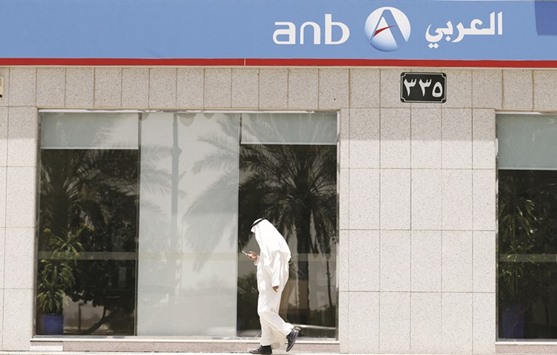The worst cash squeeze at Saudi Arabian banks since the financial crisis is easing.
A key interest rate used to price loans in the kingdom dropped yesterday by the most in more than seven years, a sign that government measures to alleviate a liquidity shortage are working. The three-month Saudi Interbank Offered Rate declined 2.2 basis points after retreating last week for the first time since July.
The drop in lending costs comes after the kingdom sold the developing world’s biggest sovereign bond offering, reduced its weekly debt issuance and pledged to inject billions of riyals into the banking sector to boost liquidity. The nation’s interbank rate rose to a 2009-high amid a cash crunch after the world’s largest oil exporter withdrew deposits and sold more than $60bn worth of local bonds since the start of 2015 to cope with falling crude prices and a ballooning budget deficit.
“We believe a large share of the $17.5bn of international deposits recently raised by the kingdom has made its way to the bank deposit book,” said Chiradeep Ghosh, a banking analyst at Securities & Investment Co in Bahrain. Taken alongside other steps by the central bank, “interest rates should decline further after the surge in the last 12 months,” he said. US interest rate increases will remain a headwind, he said.
The Saudi Arabian Monetary Agency, as the central bank is known, introduced 90-day repurchase agreements and cut its weekly debt issuance to 3bn riyals ($800mn) from 9bn riyals starting yesterday to “enhance the domestic monetary conditions,” according to a statement last week.
The regulator announced last month an injection of about 20bn riyals for banks via deposits from state-run companies and introduced seven-day and 28-day repurchase agreements, in addition to the existing overnight operation.
Saibor, as the rate is known, slipped to 2.36% yesterday. National Commercial Bank made the biggest cut to its submission, the data show, with a reduction of 15 basis points. The lender’s shares soared 30% as they advanced for eight straight days in Riyadh, the longest rising streak since they started trading in November 2014.
Central bank foreign assets shrink $7.4bn in September
Net foreign assets at Saudi Arabia’s central bank fell by $7.4bn to $546.7bn in September from the previous month, as the government drew down reserves to cover a budget deficit caused by low oil prices, official data showed yesterday.
Assets shrank by 15.5% from a year earlier to their lowest level since January 2012. They reached a record high of $737bn in August 2014 before starting to fall.
The assets are believed to be mainly denominated in US dollars, in the form of securities such as US Treasury bonds and deposits with banks abroad.
Foreign bank deposits shrank $5.1bn from the previous month to $114.4bn in September. Holdings of foreign securities fell $3.5bn to $372.7bn.

A Saudi man walks past ANB Bank in Riyadh. The lending cost drop comes after the kingdom sold the developing world’s biggest sovereign bond offering, reduced its weekly debt issuance and pledged to inject billions of riyals into the banking sector to boost liquidity.


